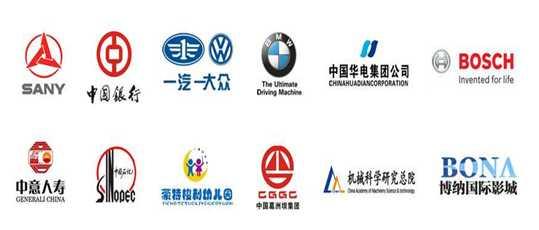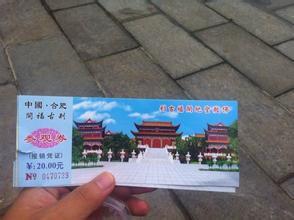
翻译是将一种相对陌生的表达方式转换成相对熟悉的表达方式的过程。其内容包括语言、文字、图形及符号的翻译。以下是小编为大家整理的关于成功的翻译案例分析,欢迎阅读!
成功的翻译案例分析:纵观国内外企业各个行业中的佼佼者,我们不难发现,所有成功的案例都不乏共同之处,那就是:注重翻译质量。但是我们也不难发现,打着这样旗号的企业并不在少数。但是有几家企业能够真正做到名副其实呢?翻译公司,不应该仅仅是个中介的角色,而应该力求成为客户的翻译外包服务供应商。一方面,为客户找到专业适合、语言水平高的翻译人员;另一方面,应该协调好译员的工作,严格运用译审流程,掌控翻译质量,最终将语言精炼、专业到位的译稿交付给客户。否则,我们可以想象一下,一份充斥着谬误的译稿对委托企业带来的何止是经济上的损失,一些无形的难以弥补的声誉上的损失是无法用金钱去衡量的。
中国翻译协会一位负责人说过:“这个市场不缺能翻译的人,大量的廉价译员充斥了整个市场。有人用字对字、词对词翻译,写出的句子读不通;客户的质量意识也有问题,没有意识到有些外语的行文体系特性和中文截然不同——他们因为不太懂语言,有人认为这样的翻译却是好的,结果国际业务受阻还找不到真正的原因。”所以,翻译公司的工作看似简单轻松,实际上举足轻重,在选择译员、译文质量控制和译审方面起到非常重要的防火墙作用,在沟通双方的第三方服务供应商方面,起到了非常重要的桥梁作用。以下为成功的翻译案例:
成功的翻译案例1:中译英:GB25596-2010食品安全国家标准特殊医学用途婴儿配方食品通则
原文:
1 范围
本标准适用于特殊医学用途婴儿配方食品。
2 规范性引用文件
本标准中引用的文件对于本标准的应用是必不可少的。凡是注日期的引用文件,仅所注日期的版本适用于本标准。凡是不注日期的引用文件,其最新版本(包括所有的修改单)适用于本标准。
3 术语和定义
3.1 婴儿
指0月龄~12月龄的人。
3.2 特殊医学用途婴儿配方食品
指针对患有特殊紊乱、疾病或医疗状况等特殊医学状况婴儿的营养需求而设计制成的粉状或液态配方食品。在医生或临床营养师的指导下,单独食用或与其它食物配合食用时,其能量和营养成分能够满足0月龄~6月龄特殊医学状况婴儿的生长发育需求。
译文:
1 Scope
This standard applies to formulas for infants with special medical purposes intended.
2 Normative References
The normative documents referenced contain provision which, through reference in this text, constitute provisions of this national standard. For dated reference, subsequent amendments to, or revisions of, any of these publications do not apply. For undated references, the latest edition of the normative document referred to applies.
3 Terms and Definitions
3.1 Infants:
Refer to persons of 0 ~ 12 months old.
3.2 Formulas for Special Medical Purposes Intended for Infants:
Refer to powder or liquid formulas that are made specially to meet the requirement of nutrition of infants who suffer special medical conditions such as special disorder, illness or other medical conditions. single ingest or ingest together with other food under direction of the doctors or clinical nutritionists, of which the energy and nutrition can meet the nutrition needs of infants of 0~6 months old suffering special medical conditions.
成功的翻译案例分析2:英译中:COMMISSION REGULATION (EU) No1130/2011 of 11 November 2011
原文:
THE EUROPEAN COMMISSION,
Having regard to the Treaty on the Functioning of the European Union,
Having regard to Regulation (EC) No 1333/2008 of the European Parliament and of the Council of 16 December 2008 on food additives (1), and in particular Articles 10 and 30(2), (3) and (5) thereof,
Whereas:
(1) Annex III to Regulation (EC) No 1333/2008 provides for the establishment of Union lists of approved food additives and their conditions of use in food additives (Parts 1 and 2), in food enzymes (Part 3), in food flavourings (Part 4) and in nutrients or categories thereof (Part 5), to which the food additives may be added according to Article 4(4) of that Regulation. The aim of the use of those food additives is to have a technological function in food additives or enzymes or flavourings or nutrients.
(2) Food additives included in Annex III to Regulation (EC) No 1333/2008 may be assigned one of the functional classes laid down in Annex I on the basis of the principal technological function of the food additive. However, according to Article 9 of that Regulation, allocating a food additive to a functional class should not preclude it from being used for several functions.
译文:
欧盟委员会,
根据欧共体成立条约,
根据欧洲议会和欧盟理事会关于食品添加剂的法规(EC)No 1333/2008(2008.12.16),特别是第10条和第30(2)、(3)和(5)条之规定,
鉴于:
(1)法规(EC)No 1333/2008的附录III规定了欧盟列表的建立,欧盟列表涵盖了批准使用的食品添加剂及其在食品添加剂(第1部分和第2部分)、食品酶制剂(第3部分)、食品香料(第4部分)和营养素及其类别中(第5部分)的使用条件,批准使用的食品添加剂可以根据法规第4(4)条规定添加至上述物质中。使用这些食品添加剂的目的在于其可在食品添加剂、酶、香料或营养素中发挥一定的技术功能。
(2)法规(EC)No1333/2008的附录III涵盖的食品添加剂可能会因其主要技术功能而被归入附录I制定的功能分类中。然而,根据法规的第9条规定,将一种食品添加剂归入一种功能类别并不妨碍其多种功能的应用。
 爱华网
爱华网



